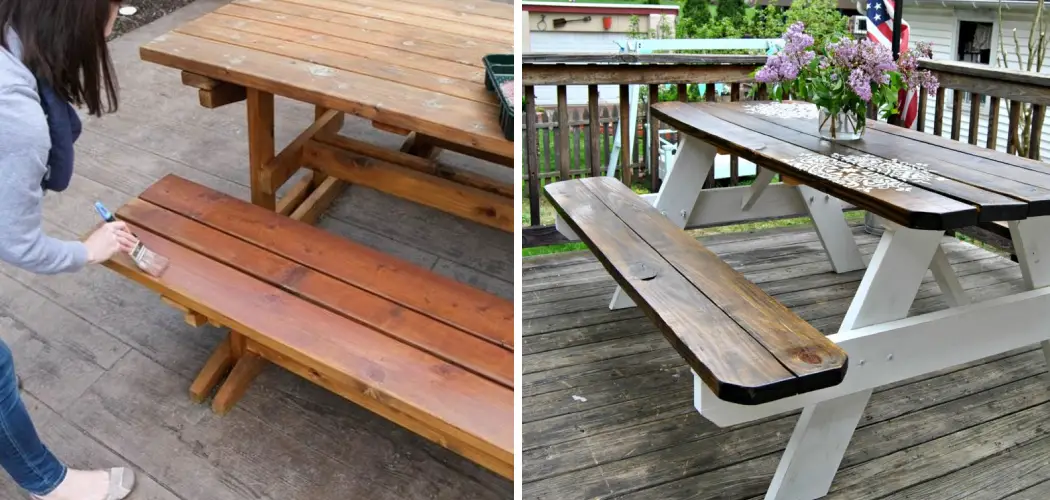Reviving or transforming a picnic table with a fresh coat of stain can breathe new life into your outdoor space. Staining a picnic table not only enhances its appearance but also provides protection against the elements, extending its lifespan.
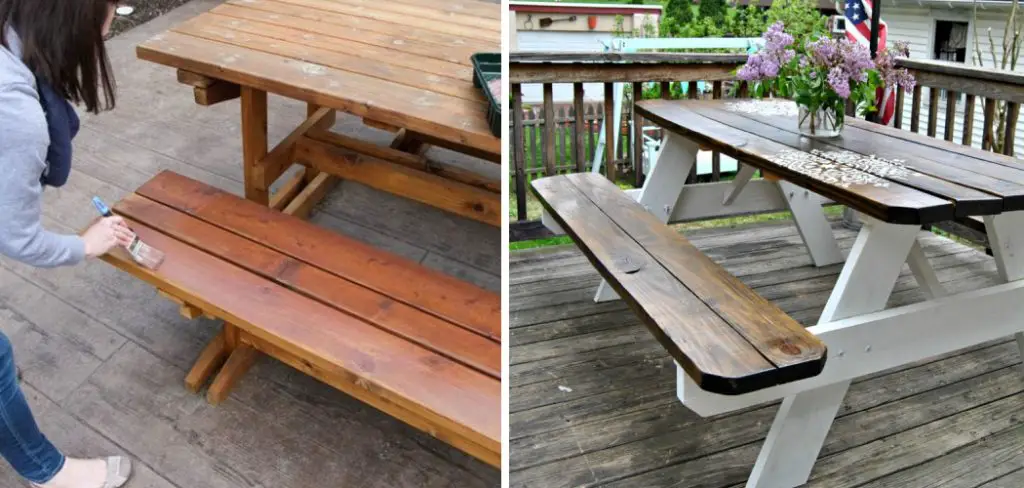
Whether you’re looking to match it with your existing outdoor decor or simply preserve the wood, staining is a crucial step. In this article, we’ll guide you through the process of how to stain picnic table, from preparing the surface to choosing the right stain, ensuring you achieve a beautiful, long-lasting finish that stands up to the rigors of outdoor use.
Importance of Staining a Picnic Table
Staining a picnic table not only enhances its appearance but also adds an extra layer of protection to the wood. Over time, weather conditions can cause wear and tear on your outdoor furniture, making it susceptible to rotting, warping, and mold growth. Staining helps prevent these issues and increases the lifespan of your picnic table.
Weather Protection
One of the main reasons for staining a picnic table is to protect it from the elements. When left unprotected, wood can absorb moisture and expand or contract, leading to cracks and warping. Staining creates a barrier that repels water, preventing it from seeping into the wood. This is especially important for outdoor furniture as it is constantly exposed to rain, sun, and other elements.
Prevents Rot and Decay
Another benefit of staining a picnic table is that it helps prevent the wood from rotting or decaying. When moisture penetrates the wood, it creates an ideal environment for fungi to grow, which can ultimately cause the wood to decay. Staining protects the wood from absorbing excess moisture, keeping it dry and preventing rot.
Enhances Aesthetic Appeal
Apart from its practical benefits, staining also enhances the overall appearance of a picnic table. Wood comes in various shades and finishes, and staining allows you to customize the look of your picnic table according to your personal preferences.
You can choose from a variety of stain colors and opacities to achieve the desired look for your outdoor space. Staining can also help cover up imperfections or discoloration in the wood, giving your picnic table a fresh and polished look.
Increases Durability
Staining ultimately increases the durability of your picnic table. Not only does it protect against weather damage and rot, but it also helps prevent scratches and other forms of wear and tear. This is especially important for outdoor furniture that is constantly exposed to heavy use and various environmental conditions. By staining your picnic table, you are investing in its longevity and ensuring that it remains a functional and attractive piece of furniture for many years to come.
10 Methods How to Stain Picnic Table
1. Using a Brush and Water-Based Stain
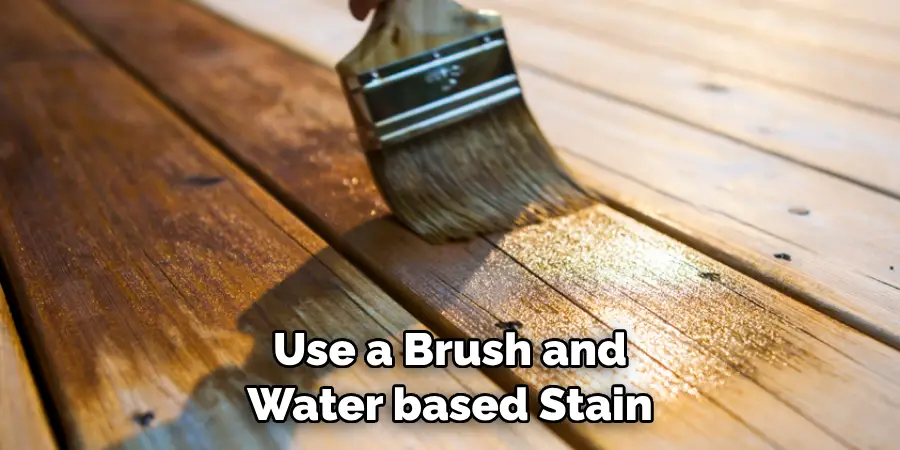
One of the most popular methods for staining a picnic table is to use a brush and water-based stain. This method is relatively simple and can be done in just a few steps. First, sand the picnic table with medium-grit sandpaper to remove any imperfections or rough patches. Next, apply an even coat of water-based stain using a brush, making sure to cover all surfaces evenly. Finally, allow the stain to dry completely before adding any additional coats.
2. Using a Rag and Oil-Based Stain
Another popular method for staining a picnic table is to use a rag and oil-based stain. This method is slightly more involved than the brush and water-based method but can still be done in just a few steps. First, sand the picnic table with medium-grit sandpaper to remove any imperfections or rough patches. Next, apply an even coat of oil-based stain using a rag, making sure to cover all surfaces evenly. Finally, allow the stain to dry completely before adding any additional coats.
3. Using an Airless Sprayer and Water-Based Stain
Using an airless sprayer is another great way to quickly apply an even coat of water-based stain on your picnic table. To start, sand the picnic table with medium grit sandpaper to remove any imperfections or rough patches.
Then wipe down with a tack cloth or damp cloth to remove dust particles from the surface before spraying the stain onto it using an airless sprayer following the manufacturer’s instructions for a proper coverage rate per square foot area being sprayed at once. Allow the stain to dry completely before applying additional coats if necessary for the desired color saturation level on the wood surface you are staining.
4. Using an Airless Sprayer and Oil-Based Stain
Similar to applying water-based stains with an airless sprayer, applying oil-based stains can also be done with this type of equipment as well! Start by sanding your picnic table with medium grit sandpaper until smooth, then wipe down with a tack cloth or damp cloth to remove dust particles from the surface before spraying oil-based stain onto it using an airless sprayer following manufacturer’s instructions for proper coverage rate per square foot area being sprayed at once.
Allow the stain to dry completely before applying additional coats if necessary for the desired color saturation level on the wood surface you are staining.
5. Using Steel Wool and Oil Based Stain
If you want a unique finish for your picnic table that will give it character, then steel wool combined with oil-based stains could be just what you need! Start by lightly wetting the steel wool pad, then dip into oil-based wood stains.
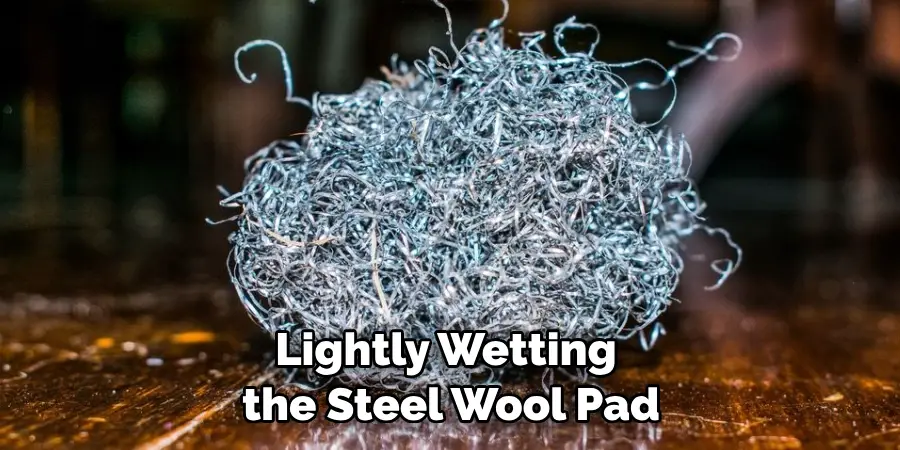
Followed by gently rubbing it across the surface of the wood being stained in a circular motion until desired color saturation has been achieved. Once complete, allow time for the wood surface to be stained too fully dry out before applying additional coats if needed.
6. Using Sanding Sealer and Water Based Stain
Sanding sealers are often used as base coats when staining woods such as pine, which tend to have soft grain that may cause discoloration when stained directly without sealing first. Before starting, make sure that the wood has been properly prepped by sanding it down until smooth, then wiping it down with a tack cloth or damp cloth removing dust particles from the surface.
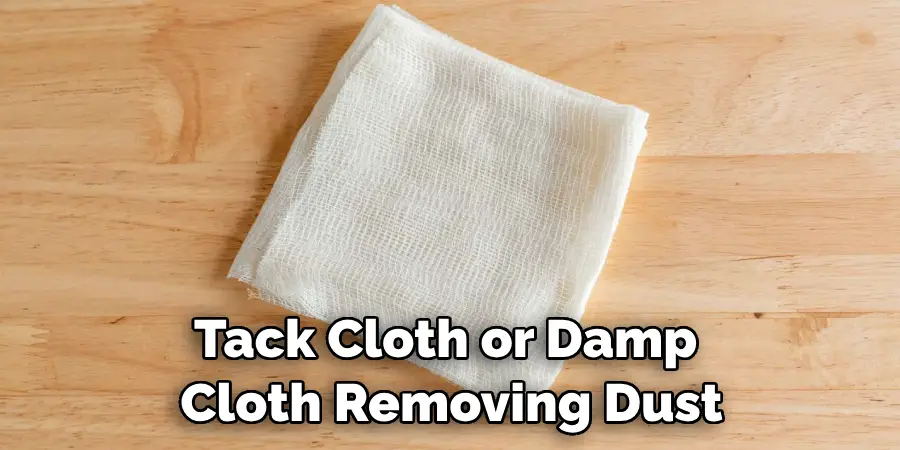
Apply one thin layer of sanding sealer followed by two thin layers of water-based wood stains, allowing each layer time to fully dry out between applications.
7. Using Wood Conditioners and Oil Based Stains
Wood conditioners are used prior to staining woods such as oak, which tend to have open grain that may cause uneven coloring when stained directly without conditioning first. Before starting,
make sure that the wood has been properly prepped by lightly wetting the steel wool pad then dipping it into oil-based wood stains, followed by gently rubbing it across the surface of the wood being conditioned in a circular motion until desired color saturation has been achieved. Once complete, allow time for the wood surface to be conditioned too fully dry out before applying additional coats if needed.
8. Using Gel Stains
Gel stains are a great option if you want to achieve deep rich colors on woods such as mahogany which tends to have tight grain that can be difficult to penetrate deeply whenstained directly without using gel formula first. Start by prepping your project piece, removing any existing finishes from its surfaces, followed by cleaning off dirt debris from its crevices, then wiping down the entire piece using tack cloth removing dust particles from its surfaces.
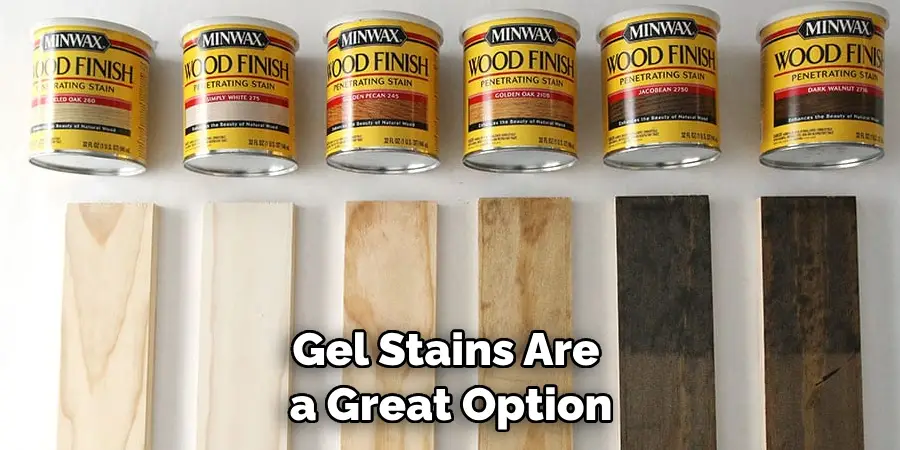
Apply one thin layer of gel formula followed by two thin layers of oil-based wood stains, allowing each layer time to fully cure between applications achieving deep rich colors ideal for darker woods like mahogany!
9. Using Spray Cans and Stain
Spray cans are great for smaller projects or for those who prefer more control over the staining process. Start by sanding your picnic table with medium grit sandpaper until smooth, then wipe down with a tack cloth or damp cloth to remove dust particles from the surface before using a spray can of wood stain to evenly apply coat across the surface of the wood being stained.
Once complete, wait for the stain to dry completely before applying additional coats, if necessary, for the desired color saturation level on the wood surface you are staining.
10. Choosing the Right Stain for Your Picnic Table
With so many methods and types of stains available, it can be overwhelming trying to choose the right one for your picnic table. When deciding, consider factors such as the type of wood used, the desired color and finish, and the level of protection needed for outdoor use. It’s also important to thoroughly research different brands and read reviews before making your final decision.
Things to Consider When Staining Picnic Table
When it comes to staining your picnic table, there are a few important things to keep in mind. Proper preparation and technique can make all the difference in achieving a beautiful, long-lasting finish. Here are some key considerations to keep in mind when staining your picnic table:
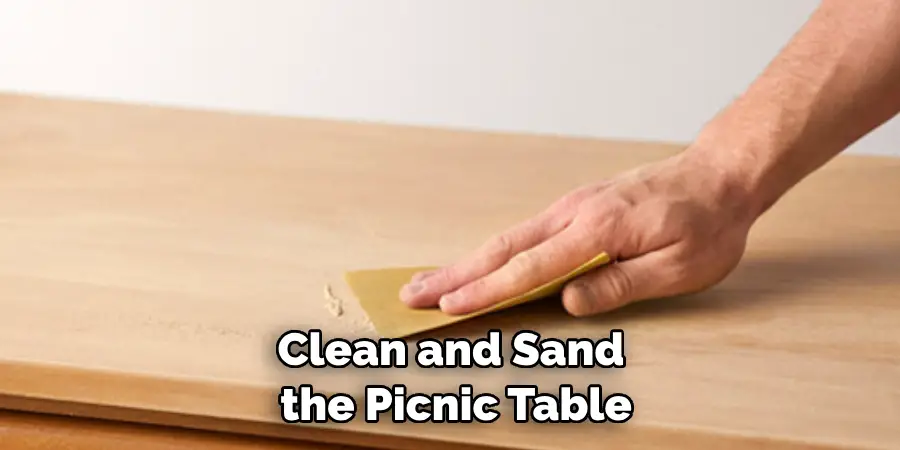
- Choose the Right Stain. There are numerous types of stains available on the market, including oil-based, water-based, and gel stains. Each type has its own advantages and disadvantages, so it’s important to research and choose the best option for your specific project.
- Prep the Wood Properly. Before staining, make sure to thoroughly clean and sand the picnic table to remove any dirt, grime, or previous finish. This will ensure that the stain can penetrate evenly and provide a smooth finish.
- Protect Yourself and the Surrounding Area. Staining can be messy, so make sure to protect your hands, eyes, and clothing with gloves, goggles, and old clothes. It’s also important to cover any nearby plants or surfaces that you don’t want to get stained.
- Test the Stain on a Small Area First. It’s always a good idea to test the stain on a small, inconspicuous area of the picnic table before applying it to the entire surface. This will give you an idea of how the color and finish will look and allow you to make any necessary adjustments.
- Apply Stain Evenly. When applying the stain, use a brush or rag to evenly coat the wood in long, smooth strokes. Make sure to follow the grain of the wood and avoid leaving any drips or puddles.
Conclusion
Staining a picnic table can instantly add value to your outdoor living space and create a beautiful place for outdoor entertaining. With the right tools and supplies, you can have it done in no time with minimal effort. Not only will you have a great-looking end product, but you’ll also be protecting your investment from premature weathering. Next time you find yourself looking to upgrade or spruce up your outdoor set up remember how easy staining a picnic table can be.
Follow these steps and soon enough you’ll have a stunningly vibrant tabletop that is ready for summer picnics and BBQs and will last for years to come! No matter what look or finish you choose, rest assured that the process of how to stain picnic table is straightforward and provides endless opportunities to customize your space to fit your personal style.

